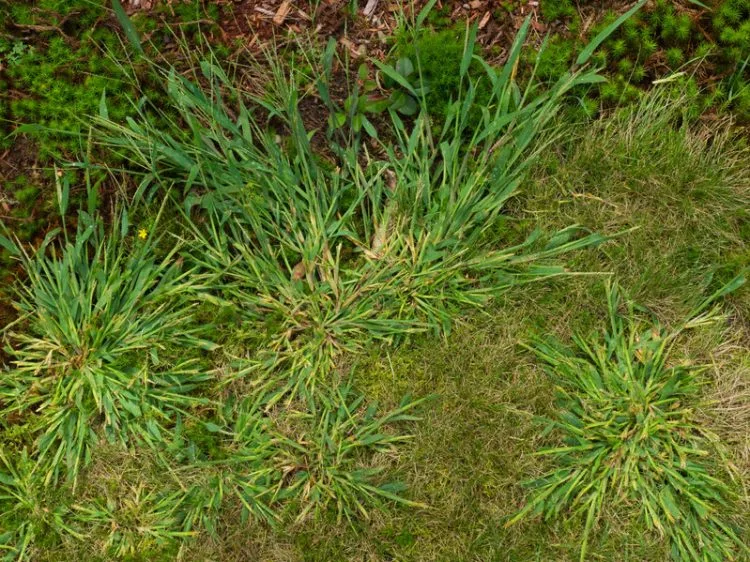How to Kill Weeds Without Killing Grass

No matter how hard you try to prevent them, at some point, weeds will attempt to invade your lawn. Weeds are problematic because they steal water, sunlight, and nutrients away from your grass, which will result in your grass not growing properly.
Weed prevention is a key component of maintaining a lush, green lawn. In simple terms, that means you should be keeping up with year-round fertilization and weed control. You should be using pre-emergent herbicides and turf builders. In addition to that, adhere to a consistent weed and feed lawn care schedule. Winterize your lawn.
Let Evergreen Lawn and Landscape do the hard work for you. Call us today to find out about our lawn maintenance service.
But what can you do when you’ve done all those things and you still find weeds sprouting in your lawn? You’ll need to kill those weeds without killing your grass.
Read on to learn how to get rid of those pesky weeds without harming your grass.
Top Ways to Get Rid of Weeds Without Killing Grass
- Hand-Pull
- Use a chemical herbicide
- Milk-jug trick
Hand-pull

Hand-pulling weeds is by far, the number one way to remove weeds without damaging your grass. It can be a tedious task, but the results are well-worth the work.
Start by getting some gardening or work gloves because some weeds can be prickly. You’ll also need to have some type of weeding tool to assist you in completely pulling out the root of the weed. Check online or your local garden store, there are many types of weeding tools.
Use your weeding tool to dig some of the soil up around the base of the weed. When the soil around the root is loose, it is easier to pull the root out. Next, grab the weed by the base and pull.
RELATED TIP: List of the Bad Summer Bugs for Lawn and Gardens
This is the best and most effective way to get rid of weeds, but it is not practical if you have an excessive amount of weeds.
Selective vs Non-selective Herbicides
If your lawn has become overgrown with weeds, it may be in your best interest to use a chemical herbicide. This way you can kill all the weeds at once.
If you decide to go this route, it is important to understand the difference between selective and non-selective herbicides. A selective herbicide is the product you probably want to use.
Selective herbicides kill specific, targeted weeds and will not harm your grass. Non-selective herbicides will kill any plant, grass, or weed that they come in contact with.
Make sure to read product labels carefully and use as directed.
If your lawn is beyond repair, consider having new sod installed. You’ll get a lawn mirroring a golf course instantaneously.
Milk Jug Trick
Some people prefer to use non-selective herbicides very carefully, so as not to damage their grass. This is a risky thing to do because of the possibility of overspray or drift.
Overspray or drift happens when the chemical herbicide becomes airborne (usually from wind) and it gets carried over to plants or grass. No worries though, there is a solution and it is called the milk jug trick.
All you have to do is cut the bottom off of a gallon milk jug and place it over the weed. Then put the sprayer nozzle of the herbicide into the top and spray away. The milk jug will create a protective barrier and prevent any overspray.
Say No to Vinegar and Salt
There are many organic herbicide recipes online these days, which often include a mixture of vinegar and or salt. It’s important to note that this method is not as effective as using a chemical herbicide, but some people are successful in killing weeds this way.
RELATED TIP: Is Pre-Emergent Safe for Dogs?
Salt and vinegar work as a non-selective herbicide though, which means if it kills your weeds, it will also kill your grass.
Most Common Weeds Found in North Texas Lawns
- Crabgrass
- Dandelion
- Spurge
- Henbit
- Bittercress
- Dallisgrass
- Nutsedge
- Poa annua
Before you can effectively kill your weeds, you need to identify which weeds have invaded your lawn. Once you know which weeds you have, you’ll be better equipped to choose the right way to extinguish those weeds.
How to Prevent Weeds
- Use pre-emergent herbicides twice a year-once in spring and once in fall
- Fertilize regularly
- Mow higher
- Water well
- Hand-pull weeds before they get out of control
Wrapping Up

Prevention is the key to maintaining a robust and healthy lawn. When you notice weeds sprouting, hand-pull them out before they spread.
For a lawn overgrown with weeds, use a selective chemical herbicide or use a non-selective herbicide in combination with the milk jug trick.
If you need assistance, don’t hesitate to contact Evergreen Lawn and Landscape. We will come out to your house, check out your lawn and advise you on how best to take care of fertilization and weed control for your specific lawn.



Comments (0)
Thanks for your comment!
Thanks for your feedback! Your comments have been successfully submitted! Please note, all comments require admin approval prior to display.
Error submitting comment!
There is a problem with your comment, please see below and try again.